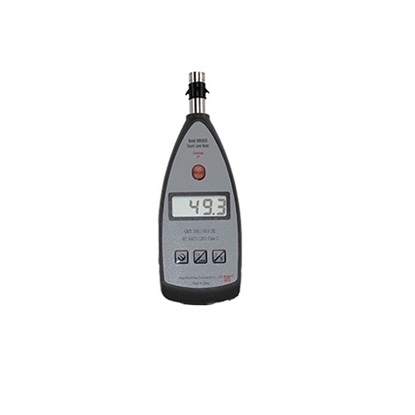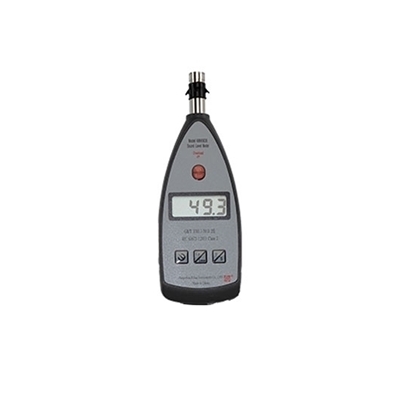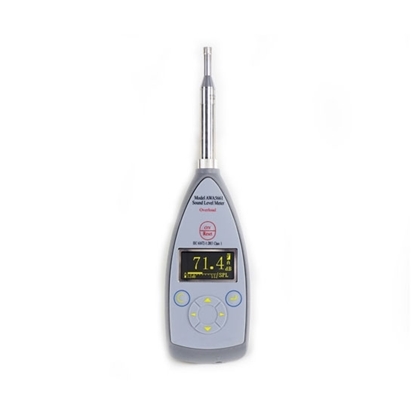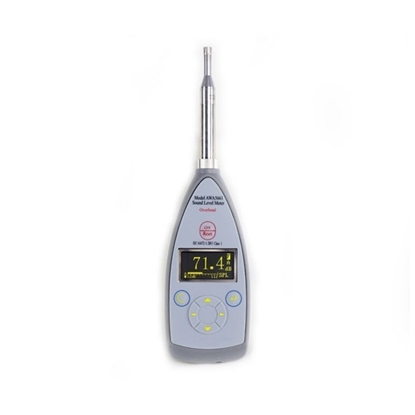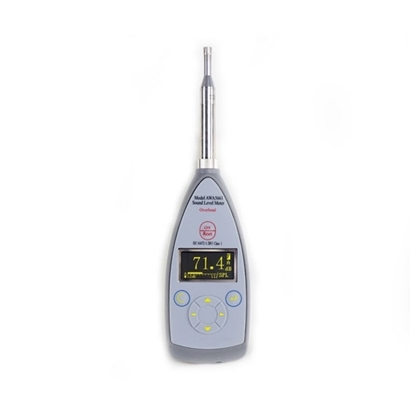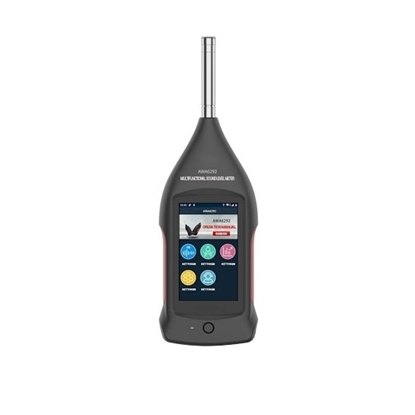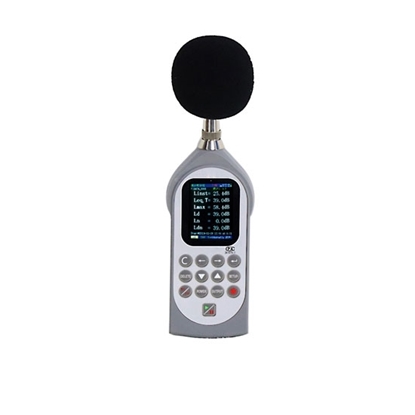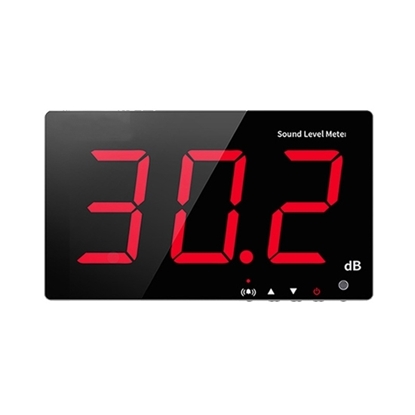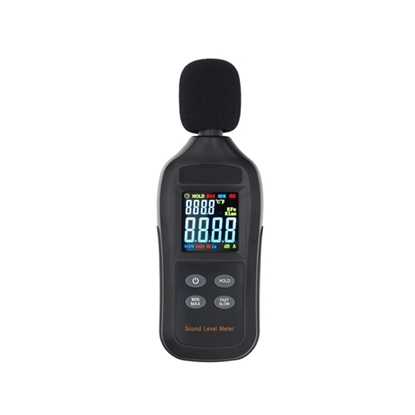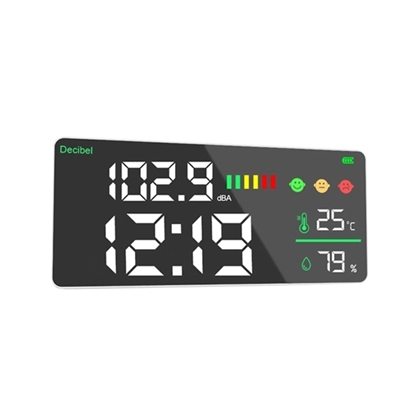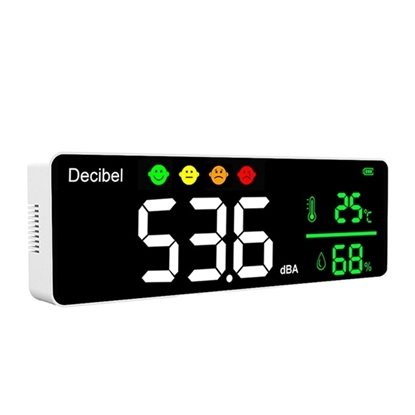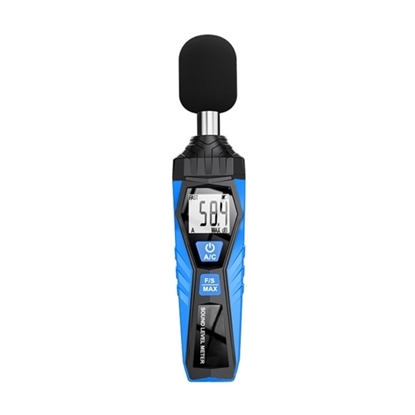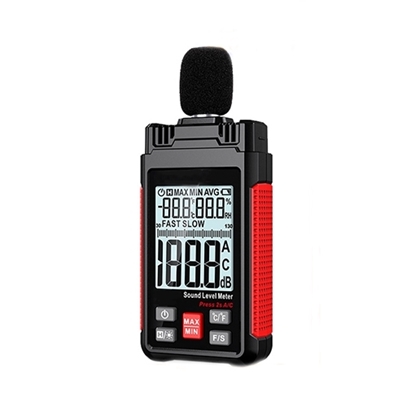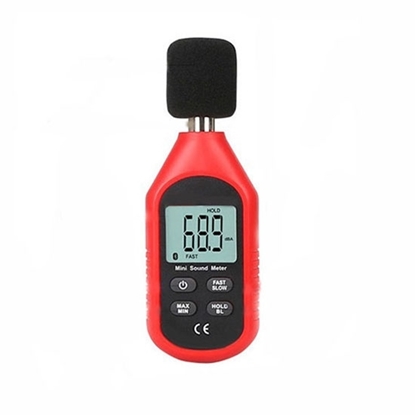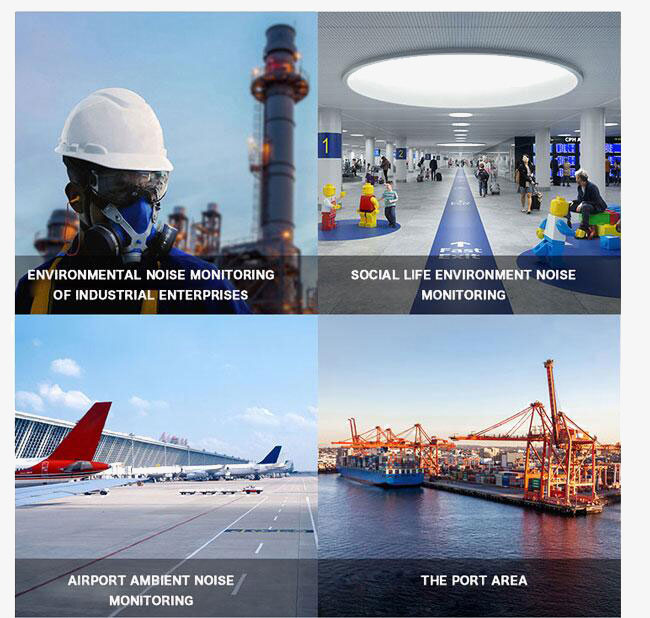Sound Level Meter
Sound Level Meter, 40 to 130 dB
Sound Level Meter, 30 to 130 dB
Sound Level Meter, 45 to 160 dB
Sound Level Meter, 17 to 132 dB
Sound Level Meter, 25 to 140 dB
Sound Level Meter, 20 to 143 dB
Sound Level Meter, 28 to 133 dB
Wall Mounted Decibel Meter, 30 to 130dB
Digital Sound Level Meter, 35dB to 135dB
Decibel Level Meter, Time/Temperature/Humidity, 30 to 130 dBA
Wall Mounted Sound Decibel Meter, 30 to 130 dBA
Digital Decibel Level Meter with 4 Digit LCD Display, 30 to 130 dB
Portable Noise Level Meter, 30 to 130 dBA/dBC
Digital Noise Level Meter with Bluetooth, 30 to 130 dBA
The sound level meter is an instrument used for noise detection and testing in public places such as work sites, squares and other public places. Higher decibel noise can even cause serious damage to the eardrum of a person, causing deafness and so on. The application of the noise tester can provide the decibel that the noise reaches in order to take relevant measures to control and reduce the noise.
There are different types of sound level meters, including Class 1 and Class 2 meters, which differ in their accuracy and specifications. Class 1 meters are typically used for precise measurements in laboratory or industrial settings, while Class 2 meters are suitable for general environmental noise measurements.
ATO.com offers a range of sound level meters to suit different needs and budgets. ATO sound level meters are easy to use and have a range of features that make noise level measurements simple and straightforward. These features include real-time measurements, data logging and the ability to connect to a computer or mobile device for data analysis and reporting. With the ATO Sound Level Meter you can quickly and easily measure noise levels and analyse the data to make informed decisions.
How does a sound level meter work?
A sound level meter (SLM) is an instrument that measures the intensity or loudness of sound. It usually consists of a microphone, an amplifier and a display or recording device. Here is how a sound level meter works.
- Sound waves enter the microphone: the SLM's microphone converts the sound waves in the air into an electrical signal.
- Amplification: The electrical signal is amplified so that it is strong enough to be processed and displayed by the instrument.
- Filtering: The signal is filtered to remove any unwanted frequencies or noise.
- A-weighting: The filtered signal is then weighted according to an A-weighting curve, which is designed to mimic the frequency response of the human ear. This is done to account for the fact that human perception of loudness is not linear at all frequencies
- RMS measurement: The SLM then measures the root mean square (RMS) value of the A-weighted signal over a specified time interval (usually one second). The RMS value is a measure of the average power of the signal over that time interval.
- Display or record: The SLM displays the sound level in decibels (dB) on a digital or analogue display, or records the measurement for later analysis
Why do you need to calibrate the sound level meter before using it?
The sound level meter measurement is to convert the vibration wave signal of the metal diaphragm of the microphone (microphone head) at the front of the sound level meter into an electrical signal through the vibration wave caused by the sound signal (sound wave), and then pass through the special weighting network and circuit. After the operational amplification, the noise decibel value is displayed by digital or meter.
The quality of the air is unstable. For example, the temperature, humidity, atmospheric pressure, etc. of the air will change at any time due to the influence of the environment and other factors. In this way, it is necessary to ensure the accuracy of the air vibration wave signal received by the metal diaphragm of the microphone. Adjust the sensitivity of the microphone accordingly.
The process of adjusting the sensitivity of the microphone is to calibrate the sound level meter.
How to use a sound level meter?
- The choice of the environment where the sound level meter is used: Choose a representative test site. The sound level meter should be off the ground and away from the wall to reduce the additional impact of the reflected sound from the ground and the wall.
- Weather conditions require that the sound level meter should keep the microphone diaphragm clean when there is no rain or snow, and a wind cover must be added to the wind above level three (to avoid wind noise interference), and the measurement should be stopped for strong winds above level 5.
- Open the sound level meter carrying case, take out the sound level meter, and put on the sensor.
- Put the sound level meter in the measurement state, check the battery, and then calibrate the sound level meter.
- Compare the table (reference for common environmental sound levels) and adjust the measurement range.
- The following can use fast (measure the instantaneous value of the environment with large changes in sound pressure level), slow (measure the average value in the environment with little change in sound pressure level), pulse (measure pulse sound source), filter (Measure the sound level of the specified frequency band) various functions for measurement.
- Record data as required, and it can also be connected to a printer or other computer terminals for automatic collection. Organize the equipment and return it to the designated place.
The main application areas of sound level meters
The sound level meter is a basic instrument for measuring noise. It is an electronic instrument. The sound level meter is generally composed of a condenser microphone, a preamplifier, an attenuator, an amplifier, a frequency weighting network, and an effective value indicating meter. According to the sensitivity of sound level meters, they can be divided into two categories. One is ordinary sound level meters, the other is precision sound level meters. According to the purpose of sound level meters, they can also be divided into two categories: one is used to measure stability. State noise, one type is used to measure unstable noise and impulse noise.
The digital detection technology adopted by the sound level meter greatly improves the stability and reliability of the instrument. The sound level meter has the advantages of simple operation and convenient use; it has the characteristics of large dynamic range, large-screen LCD digital display, automatic measurement and storage of various data, etc.
The sound level meter can be widely used for industrial noise measurement and environmental noise measurement of various machines, vehicles, ships, electrical appliances, etc. It is suitable for factories and enterprises, architectural design, environmental protection, labor and health, transportation, teaching, medical and health, scientific research and other departments.
How to calibrate the sound level meter?
- After the sound level meter is turned on, there will be four options: measure, set, recall, and calibrate. After Z - an option is the calibration option, just move the cursor to this option.
- After entering the calibration page, there will still be four options: view, calibrate, apply, and modify. Place the cursor on the second option, calibration option, and then select the calibration option.
- Insert the sensor of the sound level meter into the upgrade calibrator, and then turn on the switch of the calibrator, the calibrator will emit a standard sound level, - when it is ready, press the calibration start, and the instrument can be automatically calibrated.
- When the data displayed by the sound level meter reaches 93.8dB(A), the instrument is calibrated.
Sound Level Meter Calibration Considerations
- Before calibrating, read the instructions of the article to master the operation method and common problems of the instrument.
- The instrument should be prevented from being placed in areas with high temperature, wet and cold, waste water, dust, gas containing sulfuric acid, high alkali content or organic chemical vapor.
- Install the rechargeable battery or external power supply, pay attention to the optical rotation, and do not connect it in reverse. Long-term rechargeable batteries should not be selected to prevent liquid leakage from damaging the instrument.
- Do not disassemble and assemble the microphone to avoid throwing and falling, and place it securely when not needed.
- Do not disassemble the instrument without permission. If the instrument is abnormal, it should be sent to the maintenance company or factory for maintenance.
- During the whole process of application, an undervoltage protection alarm appears on the LCD screen, and the battery should be replaced immediately.
- Before the sound level meter measurement, start the heating for 2 minutes, and heat it for 5 to 10 minutes in wet and cold weather.
Types of sound level meters
According to the sensitivity of the whole sound level meter, there are two types of sound level meter classification: one is the ordinary sound level meter, which does not require much microphone. The dynamic range and frequency response flat range are relatively narrow, and bandpass filters are generally not used in combination; the other type is precision sound level meters, whose microphones require wide frequency response, high sensitivity, and good long-term stability. This kind of band-pass filter is used together, the output of the amplifier can be directly connected with the level recorder and tape recorder, and the noise signal can be displayed or stored. If the microphone of the precision sound level meter is removed, replaced with an input converter and connected to an accelerometer, it becomes a vibrometer that can be used for vibration measurement.
How to Choose a Sound Level Meter?
1. Spectrum analysis function
In order to perform spectrum analysis on noise, the spectrum analysis function needs to be selected. Octave and 1/3-octave spectral analysis are the most used in acoustic measurements. In the past, spectrum analysis was realized by analog filters, but now most of them use digital technology to conduct real-time spectrum analysis through digital filters.
2. Accuracy class
Instrument Accuracy Class: Class 1 and Class 2.
3. Price
When purchasing a sound level meter, you need to consider the price range of the product. The price of a sound level meter depends on many factors, including functionality, accuracy rating, number of channels, storage capacity, and more.
4. Calibration
In the process of use, it is necessary to use a sound calibrator for sound calibration. The sound calibrator is often used as a supporting instrument of the sound level meter and becomes an integral part of the instrument. There are two kinds of sound calibrators: piston sounder and sound level calibrator. The piston sounder produces 250Hz, 124dB sound pressure level, and the accuracy level is 1 or 0; the sound level calibrator produces 1000Hz, 94dB sound pressure level, and the accuracy Level 2 or 1. Class 1 should be calibrated with a class 1 or class 0 sound calibrator, and class 2 should be calibrated with a class 2 or class 1 sound calibrator.
5. Measuring range
The measurement range sometimes needs to consider its upper measurement limit in order to measure high sound pressure levels, such as 140dB, or even more than 160dB; sometimes it needs to consider its lower measurement limit, in order to measure low sound pressure levels, such as below 20dB, usually the measurement of sound level meters The range is in the 25dB to 130dB range.
6. Number of channels
The general sound level meter has only 1 channel and only measures 1 channel sound pressure level. Sometimes it is necessary to measure multi-channel sound pressure level, and it is necessary to use multi-channel. For example, the measurement of sound intensity level requires 2 channels, and the measurement of sound power level requires more channels. The multi-channel sound level meter greatly expands the use of the instrument.
7. Function
The measurement function is the most important indicator, it not only determines the application scope of the instrument, but also has the greatest relationship with the price of the instrument. According to the type of the measured signal, for the steady-state noise signal, the function of this instrument only needs to measure the instantaneous sound pressure level; for the measurement of the non-steady-state signal, it is generally required to measure the time-averaged sound level or the equivalent sound level. For analysis, choose a noise spectrum analyzer.
8. Interface
The current sound level meters generally contain RS232, USB and other interfaces, which are used to connect to micro-printers or computers, and users can choose according to the test needs.

